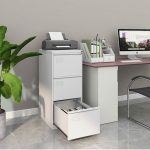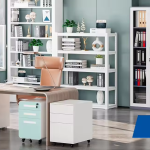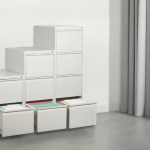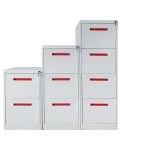Navigating the import process for steel filing cabinets from China can seem daunting, but with the right knowledge, it becomes a manageable and profitable venture. This guide breaks down the entire process, from sourcing to customs clearance, incorporating the latest 2025 regulations to ensure a smooth and cost-effective operation.
Understanding Costs: Tariffs and Taxes
Before purchasing, it's crucial to understand the import duties and taxes you'll face. Steel filing cabinets typically fall under HS code 8304.00.0000.
Key Cost Components:
- Import Duty: Ranges from 0% to 9%. The Most-Favored-Nation (MFN) tariff is 9%, but this can be lower (even 0%) if your country has a Free Trade Agreement (FTA) with China.
- Value-Added Tax (VAT): A 13% VAT is applied to the total value of the goods plus the import duty.
- Other Potential Fees: These may include customs clearance fees, port handling charges, and broker fees.
Pro Tip: Always check for applicable FTAs to minimize your duty costs. The customs website of your country should have this information.
The Step-by-Step Import Process
Step 1: Sourcing and Supplier Verification
Identify reliable manufacturers in China. Use platforms like Alibaba or attend trade fairs. Before placing an order, conduct due diligence: request company certifications, and if possible, hire a third-party inspection service to verify product quality and factory conditions.
Step 2: Shipping and Logistics
Steel filing cabinets are heavy, so choosing the right shipping mode is critical for cost management.
- Full Container Load (FCL): Ideal for large volumes. Standard 20ft or 40ft containers are common.
- Less than Container Load (LCL): Suitable for smaller shipments, where you share container space with other importers.
- Specialized Options: For non-standard, oversized cabinets, consider Flat Rack or Open Top containers.
Work with a reputable freight forwarder who can handle bookings, documentation, and inland transportation.
Step 3: Customs Clearance - The Paperwork Trail
This is the most complex part. Having the correct documents is essential to avoid delays.
Essential Import Documents:
- Commercial Invoice: Details the value of the goods.
- Packing List: Specifies the weight, dimensions, and contents of each package.
- Bill of Lading (BL) or Air Waybill (AWB): The contract between you and the shipping company.
- Certificate of Origin: Proves where the goods were manufactured, which determines applicable tariff rates.
- Insurance Certificate: Proof of coverage for the shipment.
Step 4: Customs Clearance in Your Country
Your customs broker will submit the required documents to your country's customs authority. They will assess the goods based on the declared value and HS code, then calculate the owed duties and taxes.
China's "Two-Step Declaration": Be aware that if you are exporting from China, your Chinese supplier may use this modernized process. It allows for a preliminary "summary declaration" to get goods released quickly, followed by a more detailed "complete declaration" later. While this primarily concerns the exporter, understanding it helps manage timelines.
Key Considerations and Potential Challenges
- Accurate HS Code Classification: Using the wrong HS code can lead to incorrect duty payments, fines, and seizures. The code 8304.00.0000 is specific to metal filing cabinets.
- Product Compliance: Ensure the steel filing cabinets meet the safety and quality standards of your market (e.g., stability tests, material safety).
- Shipping Insurance: Always insure your shipment against loss or damage during transit.
- Lead Time Management: Account for potential delays at ports, especially during peak seasons. Building buffer time into your schedule can prevent stock-outs.
Why Use a Customs Broker?
While it's possible to handle customs yourself, using a licensed customs broker or import agent is highly recommended. They can:
- Ensure all paperwork is correctly filled out and submitted.
- Help you leverage the most favorable tariff rates.
- Navigate complex regulations and resolve issues quickly.
- Save you significant time and reduce the risk of costly errors.
Conclusion
Importing steel filing cabinets from China is a structured process that involves careful planning, attention to detail in logistics, and strict adherence to customs regulations. By understanding the costs, mastering the required documentation, and considering professional help, you can establish a efficient and profitable supply chain.





